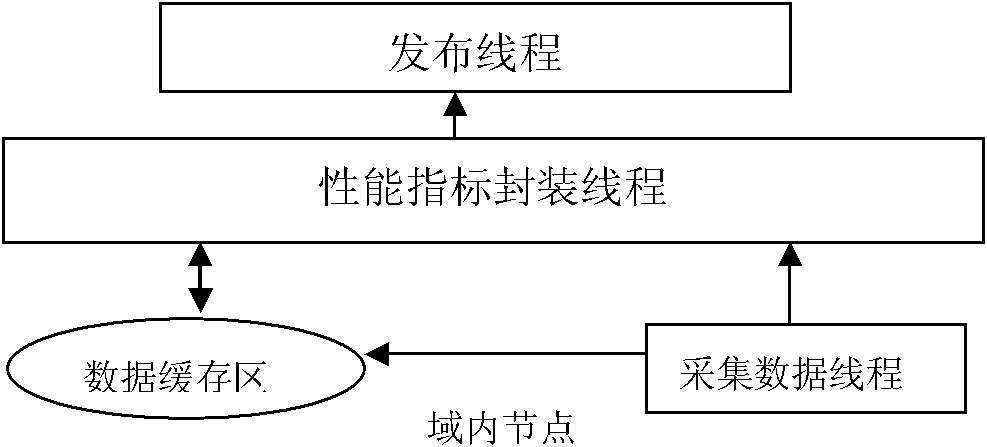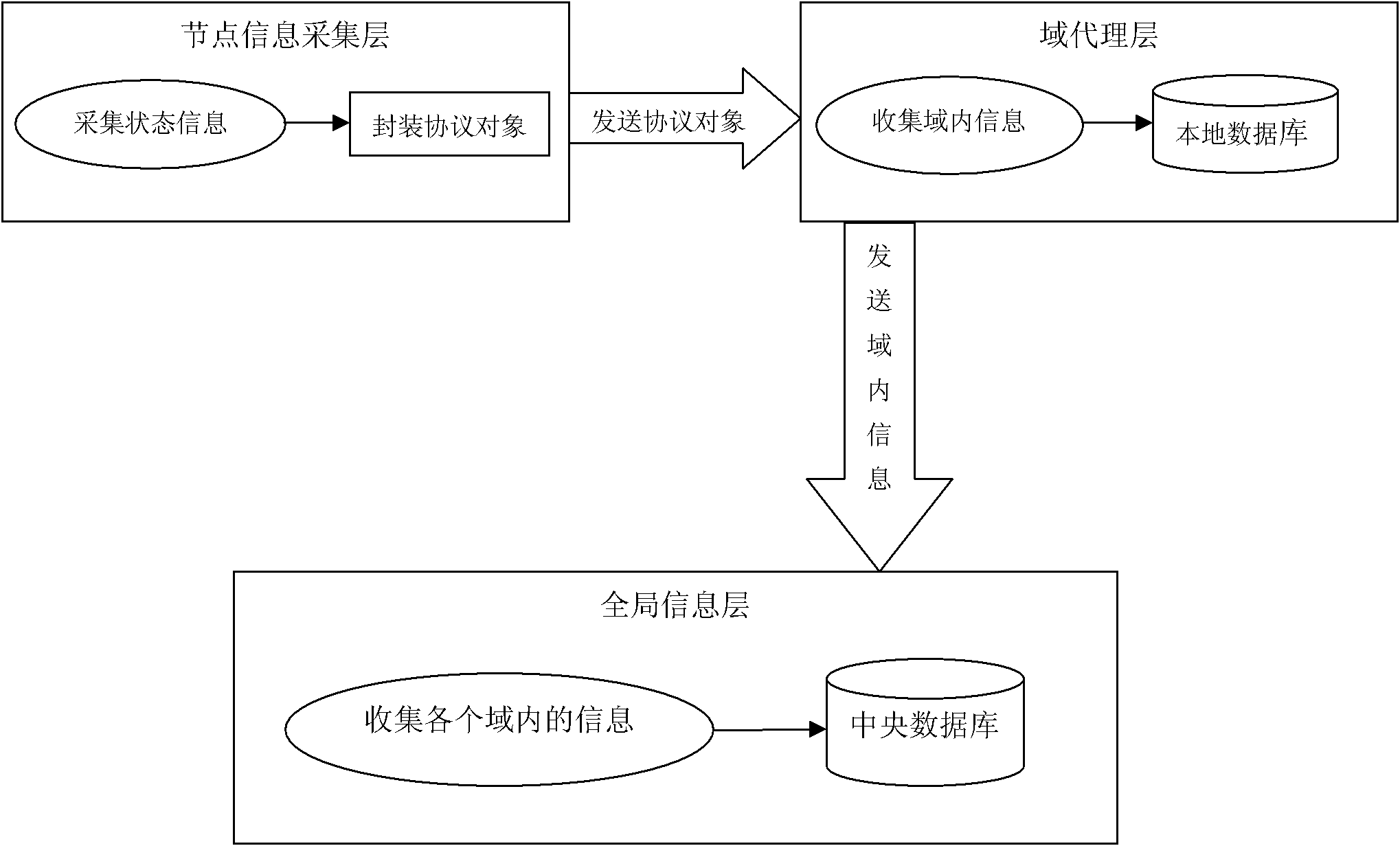System and method for monitoring grid resources based on agents
A grid resource and monitoring system technology, applied in transmission systems, digital transmission systems, data exchange networks, etc., can solve problems such as inability to use task management functions and grid resource information, incompatibility, inability to parse XML documents, etc.
- Summary
- Abstract
- Description
- Claims
- Application Information
AI Technical Summary
Problems solved by technology
Method used
Image
Examples
Embodiment Construction
[0016] see figure 1 , the agent-based grid resource monitoring system of the present invention is structurally divided into three levels, which are respectively the global information layer, the domain agent layer, and the node information collection layer, which include: sensors arranged at each node end, in the domain The sensor manager of the proxy layer, and the information center server.
[0017] In this embodiment, the grid resource monitoring system includes a sensor 11 arranged at the node end 11, a sensor 12 arranged at the node end 12, a sensor 13 arranged at the node end 13, and a sensor 21 arranged at the node end 21 , the sensor 22 set at the node end 22, and the sensor 23 set at the node end 23, each sensor is used to collect the system resource information of the host computer at the respective node end respectively. For example, the sensor 11 is used to collect the system resource information of the host 11 at the node end 11; the sensor 12 is used to collect ...
PUM
 Login to View More
Login to View More Abstract
Description
Claims
Application Information
 Login to View More
Login to View More - R&D
- Intellectual Property
- Life Sciences
- Materials
- Tech Scout
- Unparalleled Data Quality
- Higher Quality Content
- 60% Fewer Hallucinations
Browse by: Latest US Patents, China's latest patents, Technical Efficacy Thesaurus, Application Domain, Technology Topic, Popular Technical Reports.
© 2025 PatSnap. All rights reserved.Legal|Privacy policy|Modern Slavery Act Transparency Statement|Sitemap|About US| Contact US: help@patsnap.com



